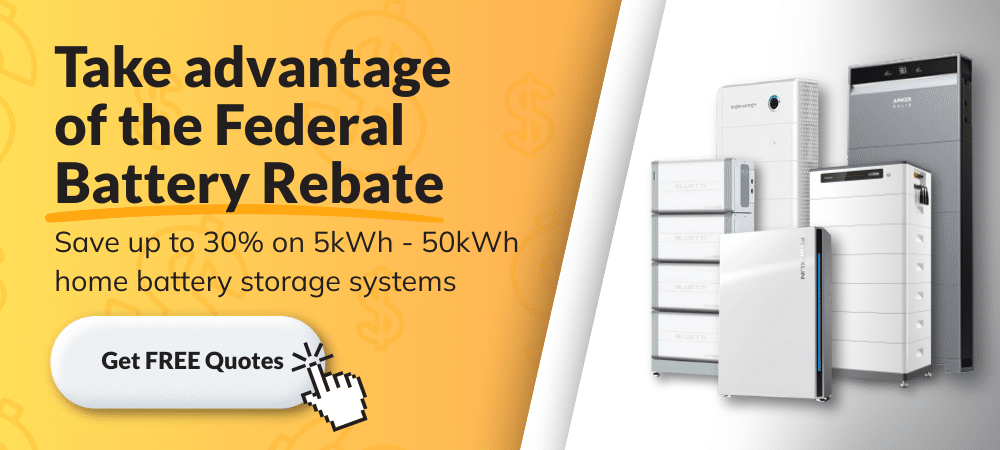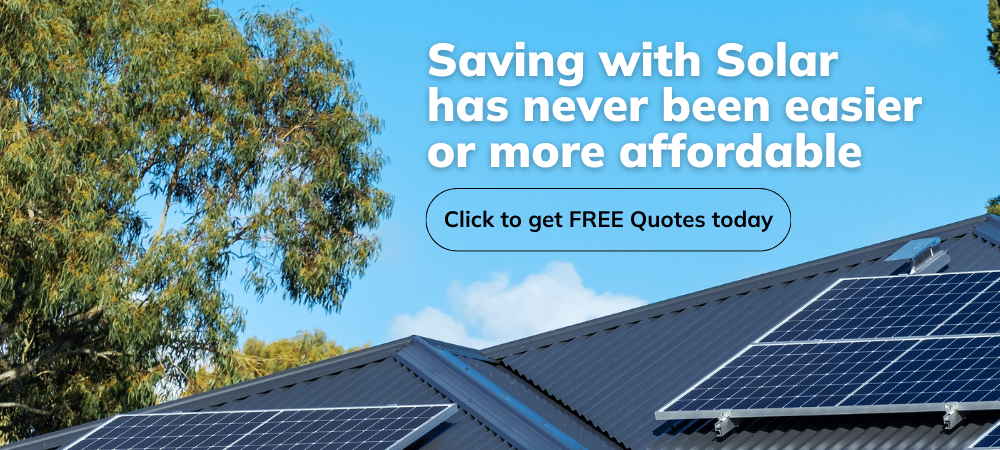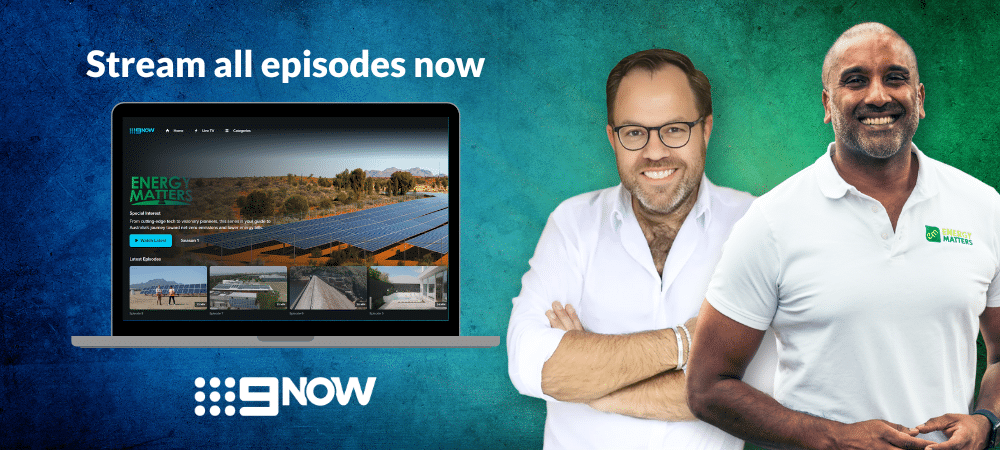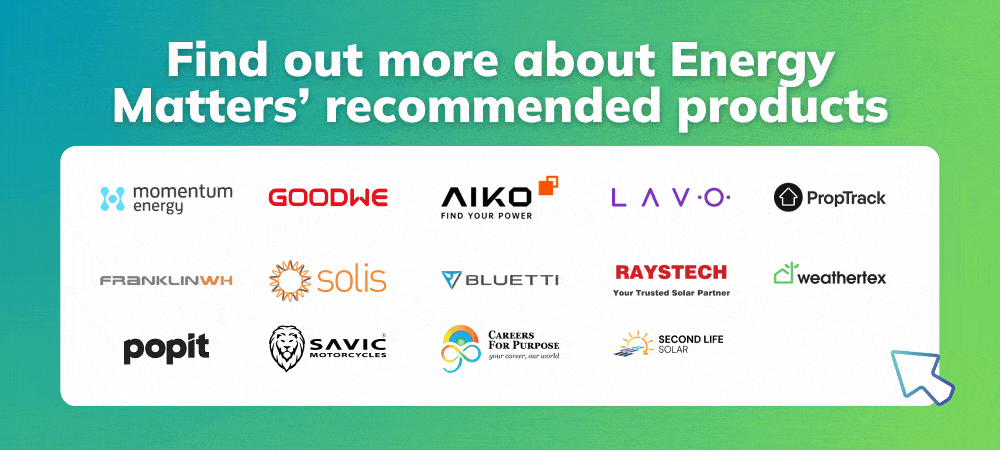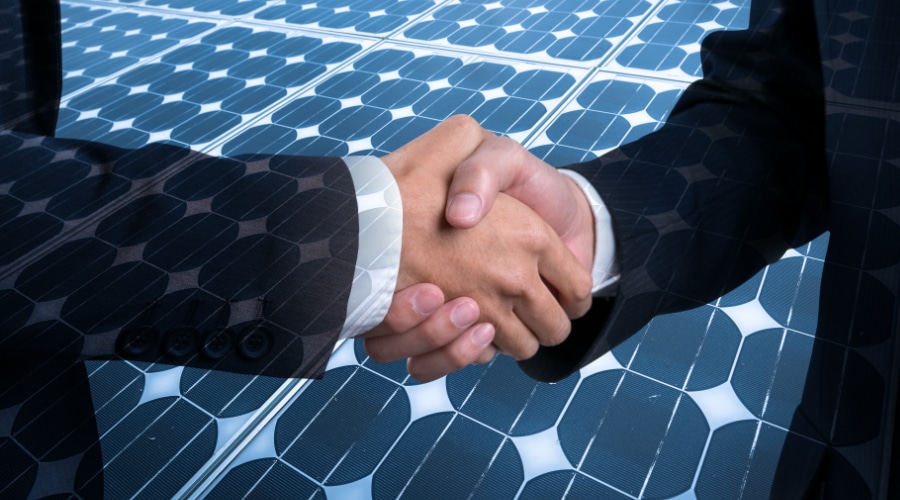
On this page
Australia has one of the world’s highest rates of solar power adoption. With a high level of solar irradiance, coupled with government incentives and decreasing installation costs, it’s no surprise that more and more Australians are switching to solar power to meet their energy needs. However, when it comes to financing a solar power installation, the greatest barrier home and business owners can face is the upfront cost. With this in mind, there are several solar power agreement options available for financing solar installations in Australia: The Power Purchase Agreement (PPA) and Solar Leasing Agreement.
For individuals interested in harnessing the benefits of solar power without the immediate financial burden, it might be worthwhile to explore these financing options. Energy Matters can provide valuable insights and free solar quotes tailored to your specific needs. Understanding the available options and gathering information can empower you to make decisions about integrating solar energy into your home or business seamlessly.
Understanding solar PPAs in Australia
What is PPA solar, and how does it work?
PPAs, also known as power purchase agreements, have grown in popularity as Australian businesses and homeowners seek supply security, reduced carbon emissions, and lower electricity rates. But what are PPAs, and how can they benefit your home and business?
A solar Power Purchase Agreement (PPA) is a financing mechanism that allows property owners to generate solar power without the high upfront costs. The electricity generated by the solar panels is fed back into the electricity grid, with the property owner purchasing electricity from their existing electricity retailer at a reduced rate.
A Power Purchase Agreement (PPA) is a contract between a property owner and an electricity provider that allows the property owner to use solar energy to generate electricity. Under a PPA, the electricity provider installs and maintains the solar panels on the property owner’s premises. In return, the property owner agrees to purchase the electricity generated by the solar panels from the electricity provider at a predetermined rate for a fixed term, typically between 10 and 25 years.
Energy Matters has been a leader in the renewable energy industry since 2005 and has helped over 40,000 Australian households in their journey to energy independence.
Let us discuss and choose the best quote that suits your needs and budget, and we can connect you with our trusted local solar installers, who will provide up to 3 FREE solar quotes for your home and business solar energy system. Get your free quotes today!
In Australia, PPAs are becoming increasingly popular for commercial, industrial and residential properties, particularly in areas with high electricity prices. Property owners benefit from the low upfront costs of installing solar panels, as the electricity provider is responsible for financing the installation and maintenance of the solar panels. The electricity provider also assumes the risk of price changes, allowing the property owner to budget and forecast their electricity costs more accurately.
The electricity generated by the solar panels is fed back into the electricity grid and is typically used to offset the property owner’s electricity consumption. The property owner continues to purchase electricity from their existing electricity retailer. Still, the amount of electricity they purchase is reduced as a result of the electricity generated by solar panels. Any excess electricity generated by the solar panels is sold back to the electricity grid, with the property owner receiving a credit on their electricity bill.
The property owner contracts with the electricity provider to install and maintain the solar panels. The electricity provider then contracts with the electricity retailer to purchase and sell electricity.
The property owner continues to purchase electricity from their existing electricity retailer, with the electricity provider responsible for selling any excess electricity generated by the solar panels.
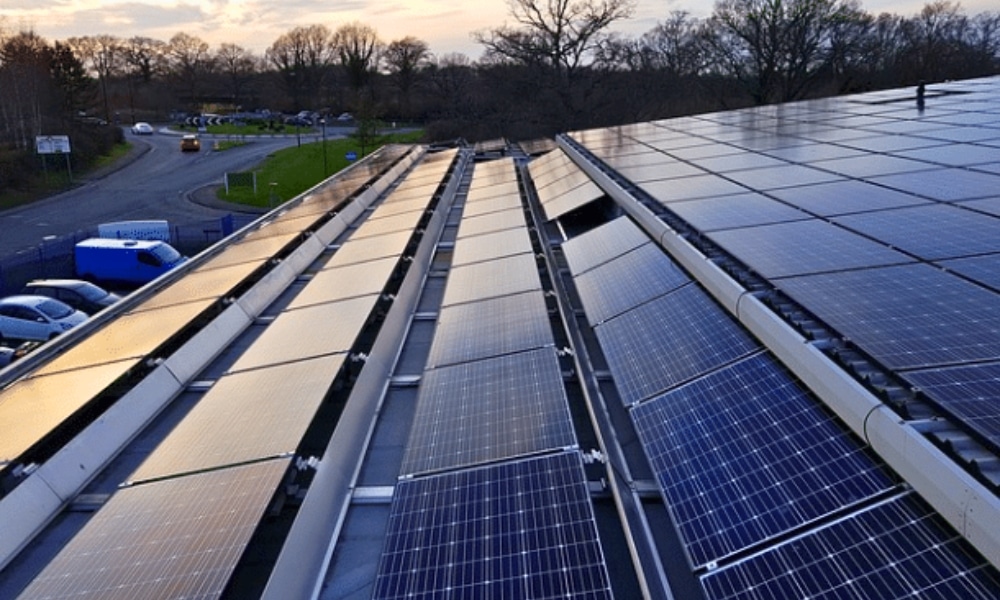
How to negotiate a PPA solar contract
Negotiating a PPA solar contract in Australia requires careful consideration of a number of factors, including price, contract length, system ownership, and maintenance. By understanding these factors and doing your research, you can negotiate a contract that meets your home and business’s energy needs while also providing long-term cost savings and sustainability benefits.
Price
One of the key factors to consider when negotiating a PPA solar contract is the price of the electricity.
Typically, the price will be set based on the cost of producing the electricity, including the cost of building and maintaining the solar farm and any financing costs. When negotiating the price, it is important to understand the market rate for solar electricity in your area and any subsidies or incentives that may be available.
You should also consider whether the price is fixed or variable and how long the price will be fixed.
Contract length
Another important factor to consider is the length of the PPA contract. Typically, PPA contracts in Australia range from 10 to 25 years. The contract’s length will depend on various factors, including the solar farm’s cost, the solar panels’ expected lifespan, and the financing arrangements. When negotiating the contract length, it is important to consider how long your business will be located at the premises where the solar energy will be used. You should also consider whether the length of the contract will affect your ability to sell your business or the property.
System ownership
The ownership of the solar energy system is another important factor to consider.
Sometimes, the provider owns the solar panels and infrastructure, and the customer only purchases electricity. In other cases, the customer may own the solar panels, and the provider will only provide the financing and maintenance services. When negotiating the ownership of the system, it is important to consider the upfront costs of purchasing solar panels and ongoing maintenance costs.
Maintenance
It is important to consider the maintenance of the solar energy system when negotiating the PPA contract. Typically, the provider will be responsible for the solar panels and infrastructure maintenance, including repairs and replacements. However, you should consider what level of maintenance is included in the contract and whether any additional costs will be incurred. You should also consider what happens if the solar panels do not produce the expected amount of electricity and whether the contract includes any guarantees.
PPA solar and the environment
One of the most significant benefits of PPA solar is its potential to reduce carbon emissions.PPA solar provides an opportunity to reduce this number by transitioning from traditional fossil fuels to renewable energy sources. By generating electricity from solar power, PPA solar can help to reduce carbon emissions and mitigate the effects of climate change.
In addition to reducing carbon emissions, PPA solar can help mitigate climate change’s effects. As the world experiences more frequent and severe weather events such as heatwaves, droughts, and floods, renewable energy sources like solar power can provide a more stable source of energy. Solar power is not subject to the same supply chain disruptions as traditional fossil fuels and is less vulnerable to price fluctuations due to weather events or geopolitical tensions.
PPA solar also helps to preserve natural resources. Fossil fuels are finite resources becoming increasingly difficult and expensive to extract.
In contrast, solar power is an abundant and renewable energy source that does not require mining or drilling. Solar power generates no waste or pollution during operation, making it a more sustainable and environmentally friendly energy source.
PPA solar provides economic benefits to both consumers and solar providers. Consumers can purchase renewable energy at a fixed rate, providing price certainty and protecting against future price increases. Solar providers benefit from a stable revenue stream, allowing for more predictable and consistent growth.
PPA solar and its impact on the grid
Under a PPA, a solar developer builds and operates a solar power plant on a consumer’s premises or on a separate site, selling the electricity generated back to the consumer or the grid at an agreed price. This arrangement has several benefits, including lower electricity bills, reduced carbon footprint, and guaranteed energy supply. However, integrating PPA solar into the national power grid raises concerns about its impact on grid reliability, stability, and efficiency, and whether it poses any challenges for utilities.
Reliability is a critical factor in the operation of the power grid, as any disruption can have serious consequences for consumers and the economy. PPA solar can potentially affect grid reliability by introducing variability in energy supply due to its dependence on sunlight. Unlike traditional power plants, which can be ramped up or down to meet demand, solar power generation is intermittent, and its output depends on weather conditions. Solar developers often use battery energy storage systems, such as batteries, to mitigate this variability by storing excess energy during peak generation and discharging it during periods of low sunlight. However, the cost of energy storage can be significant, and its efficiency is yet to be comparable to that of conventional power plants.
Stability is another factor that affects the grid’s operation, and it refers to the ability to maintain a constant voltage and frequency across the network. The integration of PPA solar can affect grid stability by introducing voltage fluctuations and harmonic distortion, which can impact the performance of sensitive equipment, such as computers and medical devices. To address these issues, solar developers must ensure that their solar plants comply with the grid code, which specifies the technical requirements for connecting to the grid, including voltage and frequency regulation.
Additionally, utilities must upgrade their grid infrastructure to accommodate the increasing penetration of PPA solar and other renewable energy sources.
Efficiency measures how effectively the grid utilises the available energy resources to meet demand while minimising losses. The integration of PPA solar can affect grid efficiency in several ways.
First, the variability of solar generation can lead to imbalances between supply and demand, which can result in the curtailment of excess solar energy or forced outage of conventional power plants to maintain grid stability.
Second, the location of solar plants can affect the transmission and distribution losses, as the distance between the generation and consumption points increases. To optimise grid efficiency, utilities must invest in smart grid technologies, such as advanced metering and control systems, to manage the variability of renewable energy sources and balance the grid in real time.
PPA solar and energy security
Australia is one of the countries that have been heavily dependent on fossil fuels to meet its energy needs. However, Australia has been making strides towards clean energy adoption with the increasing demand for renewable energy and the urgency to combat climate change. One mechanism that has gained popularity in the country is the Power Purchase Agreement (PPA) for solar power.
Energy independence
PPA solar enables businesses and households to generate electricity from solar energy, reducing their reliance on the grid. This independence enhances energy security by reducing the vulnerability of the energy system to external shocks. For instance, Australia experienced blackouts in 2016 and 2017 due to the failure of the grid, resulting in the loss of power to households and businesses. However, PPA solar can provide a reliable and independent power source, particularly during emergencies.
Reduced dependency on foreign oil
Australia imports most of its oil, which exposes the country to the volatility of the global oil market. However, PPA solar can reduce the reliance on foreign oil by providing an alternative source of energy. This reduces the country’s vulnerability to price fluctuations and geopolitical tensions affecting the oil supply.
Additionally, PPA solar can contribute to reducing greenhouse gas emissions, which is essential in the fight against climate change.
Promotion of domestic jobs and industries
PPA solar provides an opportunity to create jobs and industries in Australia. The installation, maintenance, and operation of solar systems require skilled labour, which can provide employment opportunities.
Additionally, developing a domestic solar industry can contribute to the growth of local businesses and innovation. This can also reduce the importation of solar panels, which can contribute to the trade deficit.
Solar lease agreements are explained
Solar lease agreements offer another way to access solar energy without buying the system outright. Like renting, you pay a fixed monthly fee to lease the solar panels installed on your property. Unlike a PPA, where you pay for the electricity generated, a lease involves a flat payment regardless of energy usage.
What is a solar lease agreement?
A solar lease agreement is an agreement where the consumer agrees to make regular payments on the system for a predetermined period in exchange for the solar supplier installing the system.
Benefits of solar leasing
- Affordable access to solar: Like PPAs, there are typically no upfront costs.
- Fixed monthly payments: Simplifies budgeting with consistent payments.
- Maintenance included: The leasing company handles repairs and upkeep.
- Energy independence: Reduce reliance on grid electricity while lowering energy costs. commitment to system management.
Solar lease agreements especially appeal to residential users who want predictable expenses and minimal commitment to system management.
Which is best - a solar lease or a PPA?
The major differences between a solar lease and a power purchase agreement are the duration of the arrangements and pricing model. With a PPA, you make monthly payments per unit of electricity delivered. With a lease, there are predetermined payments, regardless of how much electricity your organisation consumes.
While both a PPA and a solar lease arrangement involve zero capital outlay, there are a number of factors to consider with either option to gauge the best solution for your company or organisation.
Consumers can benefit from a solar power purchase agreement or solar leasing agreement by having access to solar energy when they would not otherwise be able to afford to buy and operate the solar system outright. However, customers should carefully weigh their alternatives to choose the one that best satisfies their energy requirements.
PPA vs. leasing vs. buying: Which is the best option for solar?
With a high level of solar irradiance, coupled with government incentives and decreasing installation costs, it’s no surprise that more and more Australians are switching to solar power to meet their energy needs. However, when it comes to financing a solar installation, several options are available, each with pros and cons.
Power Purchase Agreement (PPA)
Pros
- No upfront costs: Since the solar system owner is responsible for installing and maintaining the system, the customer doesn’t have to pay anything upfront.
- Predictable energy costs: With a fixed price for the energy produced by the solar system, customers can predict their energy costs for the duration of the contract.
- Maintenance and repairs are the responsibility of the solar system owner.
Cons
- Long-term commitment: PPAs typically require customers to commit to a long-term contract, usually between 10 and 25 years. This can make it difficult to move or sell the property in the future.
- Limited control over the system: Since the solar system owner is responsible for maintaining and repairing the system, customers have limited control over the system’s performance.
- Higher energy costs: PPAs may have higher energy costs than other financing options due to the long-term commitment and the fact that the solar system owner needs to recoup their installation and maintenance costs.
Leasing
Under a solar lease, the customer leases the solar panels from a solar system owner for a predetermined period, usually between 10 and 20 years. During the lease period, the customer is responsible for paying the solar system owner a monthly fee in exchange for using the solar panels.
Pros
- No upfront costs: Similar to a PPA, a solar lease doesn’t require customers to pay anything upfront.
- Predictable energy costs: Monthly lease payments are fixed, allowing customers to predict their energy costs for the duration of the lease.
- Maintenance and repairs are the responsibility of the solar system owner.
Cons
- Long-term commitment: Like a PPA, a solar lease requires customers to commit to a long-term contract, which can make it difficult to move or sell the property in the future.
- Limited control over the system: Since the solar system owner is responsible for maintaining and repairing the system, customers have limited control over the system’s performance.
- Higher energy costs: Monthly lease payments may be higher than energy costs under other financing options due to the long-term commitment and the need for the solar system owner to recoup their installation and maintenance costs.
Purchasing solar panels
Purchasing solar panels involves paying for the installation and maintenance of the solar system upfront. This can be done through a personal loan, home equity loan, or other financing options.
Pros
- Lower energy costs: Since the customer owns the solar system, they benefit from lower energy costs over the system’s life.
- Increased property value: Installing solar panels can increase the value of a property, making it easier to sell in the future.
- Complete control over the system: Customers have complete control over the solar system’s performance, including maintenance and repairs.
Cons
- Upfront costs: Purchasing a solar system requires an upfront investment, which can be significant.
- Higher risk: Customers who purchase a solar system assume the risk of maintenance and repair costs, which can add up over the system’s life.
- Technology obsolescence: As with any technology, solar panels can become outdated over time, requiring replacement or upgrades, which can be costly.
Comparing solar PPAs and leasing agreements
While both options provide access to renewable energy without significant initial investments, there are key differences between PPA solar Australia contracts and solar lease agreements:
|
Feature |
PPA |
Lease |
|
Payment structure |
Pay per kWh generated |
Fixed monthly fee |
|
Energy cost savings |
Depends on usage; often lower rates |
Savings vary; fixed costs |
|
Ownership |
Provider owns the system |
The leasing company owns the system |
|
Flexibility |
Purchase option at the end of term |
Purchase options may vary |
|
Maintenance |
Provider handles maintenance |
The leasing company handles the maintenance |
Choosing between the two depends on your energy needs, financial preferences, and long-term goals.
Which option is best for you?
When deciding which financing option is best for your solar installation, consider your budget, energy needs, and long-term goals.
A PPA or leasing option may be better if you have limited upfront funds, as they require no upfront costs. However, keep in mind the long-term commitment and potentially higher energy costs associated with these options.
If you have the funds to purchase a solar system upfront, this may be the best option for you in the long run, as it can result in lower energy costs and increased property value.
Ultimately, it’s important to research and consult with solar professionals to determine the best financing option for your unique situation. Consider installation costs, energy usage, contract length, and maintenance and repair responsibilities when deciding.
Whether you choose a PPA, lease, or purchase solar panels, switching to solar power is a smart investment that can save you money on energy costs and reduce your battery’s environmental impact.
Factors to consider when choosing a renewable energy contract
Whether you opt for a PPA or a solar lease agreement, consider the following factors:
- Electricity usage: Analyse your energy consumption patterns to determine potential savings.
- Contract terms: Review the length, renewal options, and early termination clauses.
- Cost comparisons: Compare the cost per kWh under a PPA versus a lease.
- Solar reputation: Work with a trusted solar expert like Energy Matters to ensure quality service.
- Environmental impact: Both options contribute to reducing your carbon footprint, but consider your commitment to renewable energy goals.
Why choose solar financing options in Australia?
Australia’s abundant sunlight and growing support for renewable energy make solar power a wise investment. Solar PPAs and leasing agreements are part of solar financing and are particularly advantageous because they:
- Eliminate the barrier of high upfront costs.
- Provide immediate savings on electricity bills.
- Support Australia’s renewable energy transition.
- Enable energy independence and protection against rising grid prices.
With state and federal incentives for solar adoption, now is the perfect time to explore these flexible financing solutions.
Trust Energy Matters for your solar needs
Solar PPAs and leasing agreements make renewable energy accessible to more Australians by eliminating the upfront costs of solar installation. These options provide affordable, hassle-free pathways to reduce energy bills and support sustainability. Let Energy Matters help you make the right choice for your energy future.
Energy Matters is one of Australia’s most trusted solar quotes due to our high customer satisfaction and industry recommendations. Our team of solar experts can help you get up to 3 FREE solar quotes from pre-qualified and vetted solar firms in your area. Let’s harness the power of the sun together!








